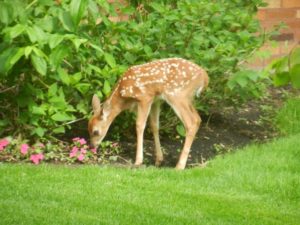As I think I have said before, there are shortages of small birds and songbirds in Powderhorn Park this year. The backyard is doing well, with many White-breasted Nuthatches, Northern Cardinals, American Goldfinches, House Finches, Black-capped Chickadees, American Robins, House Sparrows, Downey Woodpeckers and Gray Catbirds.
Catbirds are new to this area, in my view anyway, and one of the first unusual birds I found in my early birding days in an odd state immediately west of here. The St. Paul neighbors in one of my St. Paul homes said Catbirds had been there about five years. I have spent a lot of time in both of my two southwest St. Paul homes. (It is possible that I have no St. Paul homes, but was taking care of four animals, in two St. Paul homes for half of June. One of the St. Paul homes is owned by a very nice person who used to live across the street from my current imaginary Powderhorn home and I may live in a 20-some-year-old Dodge van parked in some Powderhorn alley.)
Back to my imaginary southwest St. Paul homes. My former across-the-street-Powderhorn neighbor has a very nice Robin’s nest with four babies just 2 feet from their nice backyard deck. My first look at the babies caused one parent (I believe the male) to be very upset. After that, the parents settled down and I visited the kids, which seemed to grow every day.
I had something new in my other imaginary St. Paul home also. A couple of months ago, I wrote about the deer and a large Virginia Opossum. No opossum in the yard this time but a White-tail fawn spent much of one day in the backyard, and its mother paid a short visit. The fawn wandered around the yard for a while, and looked in the house windows. I have no idea if the deer, large or small, see what’s in the window, watch TV, see humans, or see their own reflection, but they do spend time looking in windows. Then this fawn spent at least four hours sleeping in a nice peaceful place in the yard, visually checking the area every few minutes. That’s where he or she was when his or her mother made a short check-up.
The fawn made a close examination of a full-size tin baby giraffe yard ornament but did not study the oversized Canada Goose, or the oversized Great Blue Heron, or the undersized thin Moose. We won’t even get into the Black Bear and whether it is a very much alive one.
Back to the park. There is still a shortage of song and small birds, as I think I say every month (and at the beginning of this column) but most of the water birds and shore birds are doing fine. The Canada Geese, Mallards and Wood Ducks, young and old, seem mostly to be doing well. The Double-crested Cormorants also seem well, in small and large groups. The Heron-like birds, as the Stokes field guide calls them—Great Egrets and Great Blue Herons, the usual ones—seem fine, with short Great Blue Heron fights. I have not seen any Eagles or Hawks lately.
I received a very nice letter today (June 27) from a fairly nearby Powderhorn neighbor. The letter is in this issue of Southside Pride and contains good news about Mourning Cloak butterflies and very sad news about a litter of baby Mallards. Thank you for the letter.
Comments and observations are always welcome. Send them to me, in care of Southside Pride. Thank you.
Dear John Karrigan,
I have lived one block south of Powderhorn for 30 years. Your column in Southside Pride is always the first thing I look at because it is not only about wildlife, it is about the neighborhood (I was pleased to see more neighborhood news in the last issue, e.g., the Stephanie Fox article about the guys at Action Auto).
About three weeks ago I noted dozens (if not hundreds) of black caterpillars about 3 inches long feeding on one of my boulevard Hackberry trees. I only saw them for a few days, and they did little damage to the tree other than defoliating a couple of small branches. After researching them online, I thought they might be Mourning Cloak butterfly caterpillars. This was confirmed last weekend when I started seeing Mourning Cloaks flying around my yard.
I mention this to you in case any of your other readers might be interested. A lot of people would freak out seeing this type of infestation and either cut down the infested branches or spray poison on them. I have many indigenous plants in my yard and am happy that the City of Minneapolis tree department planted Hackberries. In the 30 years I have been gardening on this property I have seen a radical decrease in the number of butterflies, and hope that more people will choose indigenous plants for their yards.
On a sad note, a batch of baby Mallards fell into the storm sewer drain yesterday and appeared to get too far in to be rescued. The poor mother duck wandered around the neighborhood frantically calling for her babies for a couple of hours until she was too exhausted, or gave up; it was heartbreaking.
Best regards, Patti Erickson























